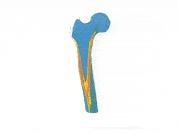
Innovating Biomedical Breakthroughs with Additive Manufacturing.
Share
Discover the potential of AM in bioengineering to drive biomedical innovations and improve patient outcomes.
Introduction:
Additive Manufacturing (AM) has become a game-changer in the biomedical field, offering unprecedented possibilities for patient-specific solutions and groundbreaking innovations. By leveraging AM technology, the bioengineering sector is witnessing significant advancements that are transforming healthcare delivery and patient outcomes.

Custom Implants and Prosthetics:
One of the most impactful applications of AM in bioengineering is the creation of custom implants and prosthetics. Traditional methods of manufacturing implants are often time-consuming and costly, with limited customization options. However, AM allows for the production of patient-specific implants tailored to the exact anatomical requirements of the individual. This customization leads to better integration, reduced recovery times, and improved patient satisfaction.
Tissue Engineering:
AM is also revolutionizing tissue engineering by enabling the creation of complex tissue structures. Using biocompatible materials and cells, researchers can fabricate scaffolds that promote tissue growth and regeneration. This technology has the potential to address the shortage of donor organs and tissues, offering hope for patients with severe injuries or chronic conditions.
Drug Delivery Systems:
Innovative drug delivery systems are another area where AM is making significant strides. AM allows for the precise control of drug release profiles, enabling the development of personalized medication regimes. This precision ensures that patients receive the correct dosage at the right time, enhancing treatment efficacy and reducing side effects.
Surgical Planning and Training:
3D printed anatomical models are invaluable tools for surgical planning and training. Surgeons can practice complex procedures on accurate replicas of patient anatomy, improving their skills and reducing the risk of complications during actual surgeries. Additionally, these models are used in medical education to provide hands-on learning experiences for students.
Case Study: Hyperganic’s Bioengineering Solutions
Hyperganic is at the forefront of bioengineering innovations with its advanced AM solutions. By utilizing algorithmic design and simulation, Hyperganic creates highly intricate structures that are optimized for bioengineering applications. Their work in producing custom implants and tissue scaffolds exemplifies the transformative potential of AM in healthcare.
Challenges and Future Directions:
While the benefits of AM in bioengineering are immense, there are still challenges to overcome. Ensuring the biocompatibility and safety of printed materials, navigating regulatory approvals, and scaling up production are critical areas that require continued research and development. However, with ongoing advancements and collaborations between industry and academia, the future of AM in bioengineering looks promising.
Conclusion:
Additive Manufacturing is revolutionizing the bioengineering field, driving innovations that improve patient outcomes and offer new solutions to longstanding medical challenges. As the technology continues to evolve, its impact on healthcare will only grow, paving the way for a future where personalized medicine and advanced biomedical solutions are accessible to all.
